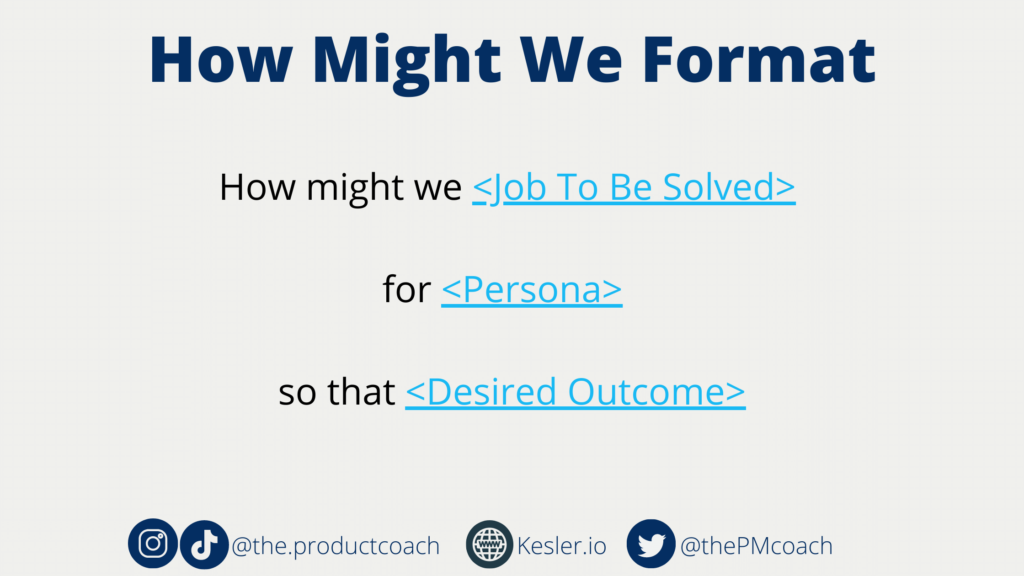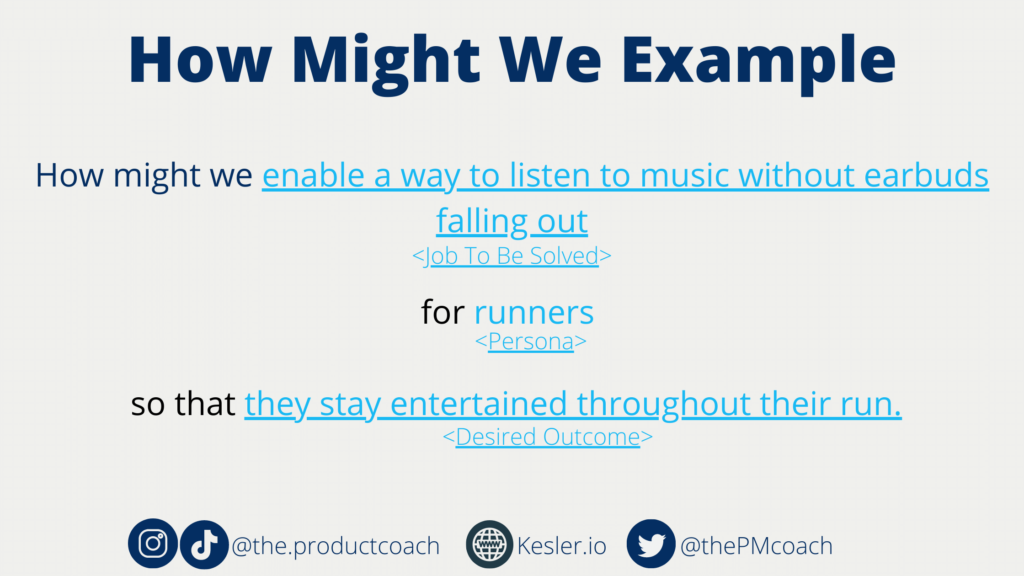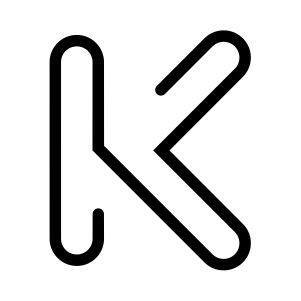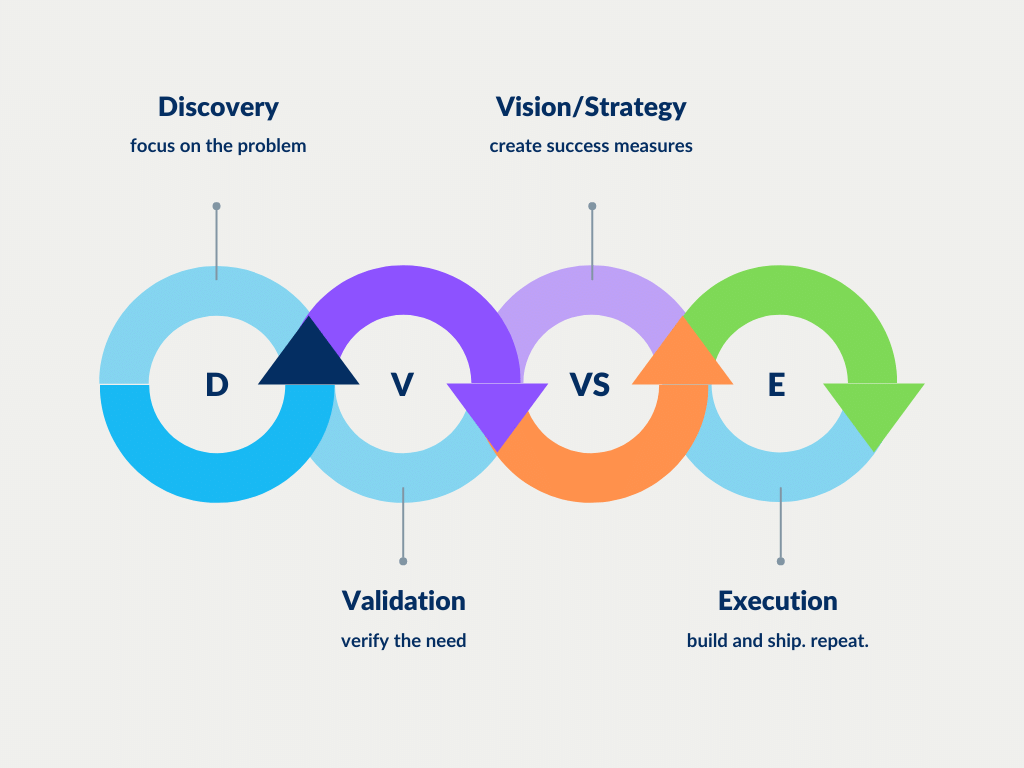So to me, Assumption Mapping and How Might We are somewhat adjacent steps. I’ll be the first to admit the image I have above that looks like each of these is a step in a trip is perhaps not the best way to represent the process of product management visually. As product managers, multitasking is such an important ability. When I say multitasking, I don’t mean being able to do many things simultaneously. I don’t believe anyone can truly “multitask” in the strictest definition of the word effectively, but that’s a whole philosophical debate. Let me know in the comments your thoughts are on multitasking are. By multitasking, I’m more talking about juggling multiple things that are all in the air and making sure no ball gets dropped, and recognizing that we could be shifting thought processes while we’re in flight. With some of these frameworks, we could be in every aspect of the production process all at once. When we’re talking about How Might We, this is perhaps the first time we could simultaneously be in all of these steps. For example, we might develop a How Might We statement that requires more Discovery or needs validation. We might also craft a How Might We statement that doesn’t actually fit with our vision/strategy as a company or that we actually can’t execute on for some reason. Don’t let this intimidate you; this is why I bring this up as the last step in Discovery, because, at this point, you’re ready to expand into the world of ideation, validation, vision, strategy, and execution. How Might We get there together? Let’s find out.
What is How Might We, and how do we use it?
How Might We is a way of rephrasing a problem or job statement as a question. The structure of a How Might We statement follows this format:


How might we <job to be solved> for <persona> So that <desired outcome>
This is why it’s so important to define our personas and know all our customers’ jobs to be done. When we rephrase a job or problem as a question, we can think more creatively about solutions because we’re not just limited to the first idea that pops into our head. For instance, How might we enable a way to listen to music without the earbuds falling out for runners so that they stay entertained throughout their run? There can be numerous ideas to solve this; we could provide them a Bluetooth speaker they clip on themselves, make some material that gets even grippier when sweat hits it, or make some clip that hugs the ear comfortably. After we have a few How Might We Statements, we must choose the ones we want to start ideating on. This is where some quick validation comes into play.
Validating the job against our company vision
So, at the beginning of this article, I mentioned you might be in multiple steps of the product management process simultaneously. Here’s one of those times. We’re technically in Discovery, but we’re now coming up with a solution to a customer’s problem. First, we need to validate the ideas we come up with for solving these How Might We statements fit with the company vision, strategy, or our north star metric. If the ideas don’t work with these, we need to think of another idea or throw it out. With that said, how do we start ideating rapidly? When I run workshops or do this as a group, I typically begin this rapid ideation exercise by asking the team to come up with their worst possible idea first.
Worst Possible Idea
The worst possible idea enables us to jump-start our creative mind by coming up with ideas we think are so bad they would never work or, in a way, are a counter solution. I love doing this as a group or in a workshop because the answers are typically hilarious, and also possible to find that if we alter the ideas around a little bit, we might come up with a great idea. For example, going with the How Might We statement above, we could package the earbuds with a roll of duct tape so they can stick them to their ear every time they go for a run. This idea is silly, but it can make us think about ways to improve upon this idea. For example, going with the tape idea, we could create a moldable earpiece that conforms to your ear like an earplug.
Conclusion
So we have our personas done, we have our customer journey maps done, and now we’ve even come up with ideas for solving our customers’ problems. This is huge because when we get back into Discovery, we already have laid the groundwork to move even faster the next time. We might iterate every so often on our personas and journey maps, but for the most part, we can use them as a reference and skip those steps. This means we can jump right into How Might We and then move into Validation. So what’s next, you ask? Next, we move into the Validation piece of the process. We will be diving deeper into the ideas we came up with using our How Might We statements, rapidly iterating, wireframing, prototyping, and experimenting on them. All the while keeping the customer and their feedback at the center.



Recent Comments